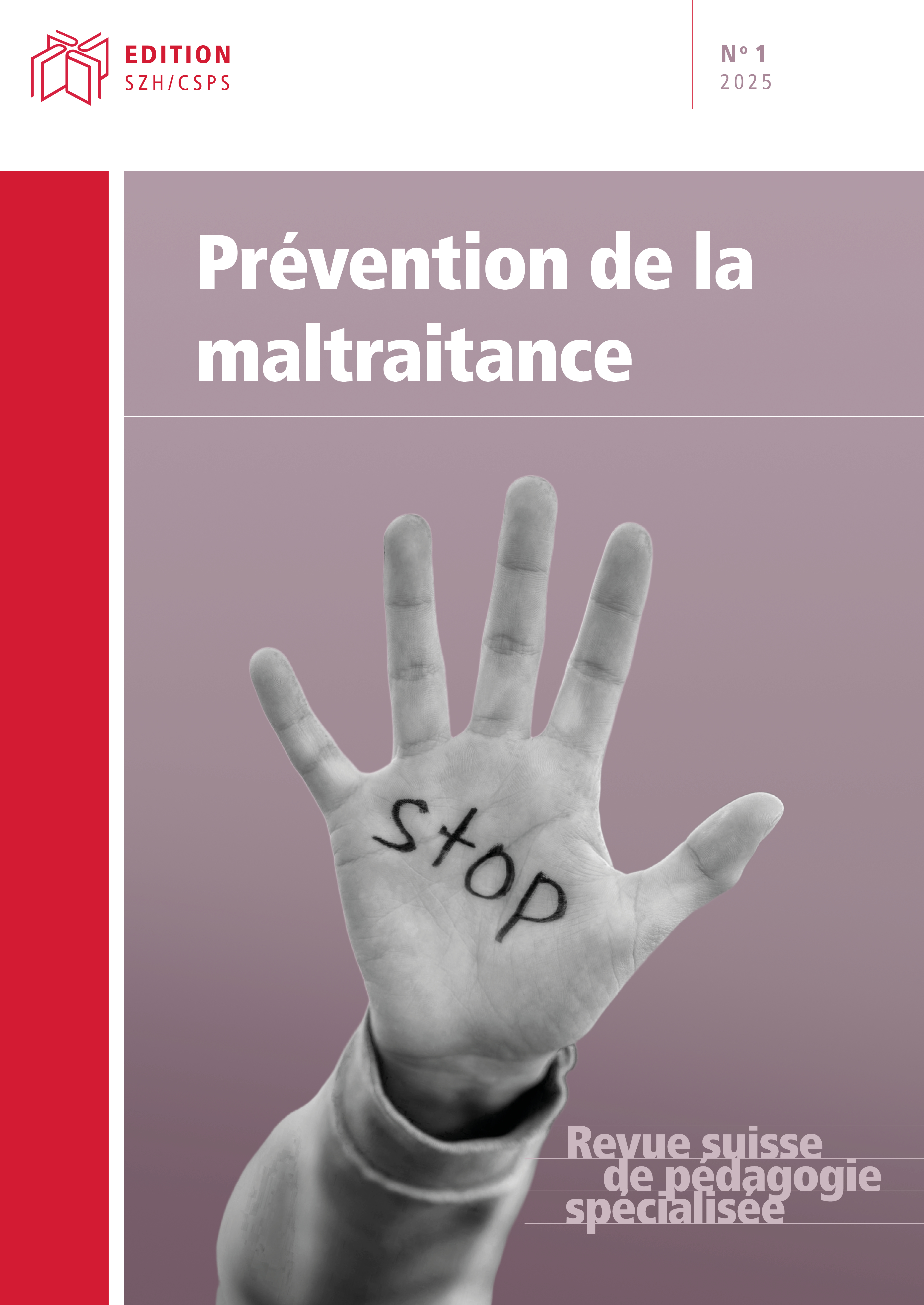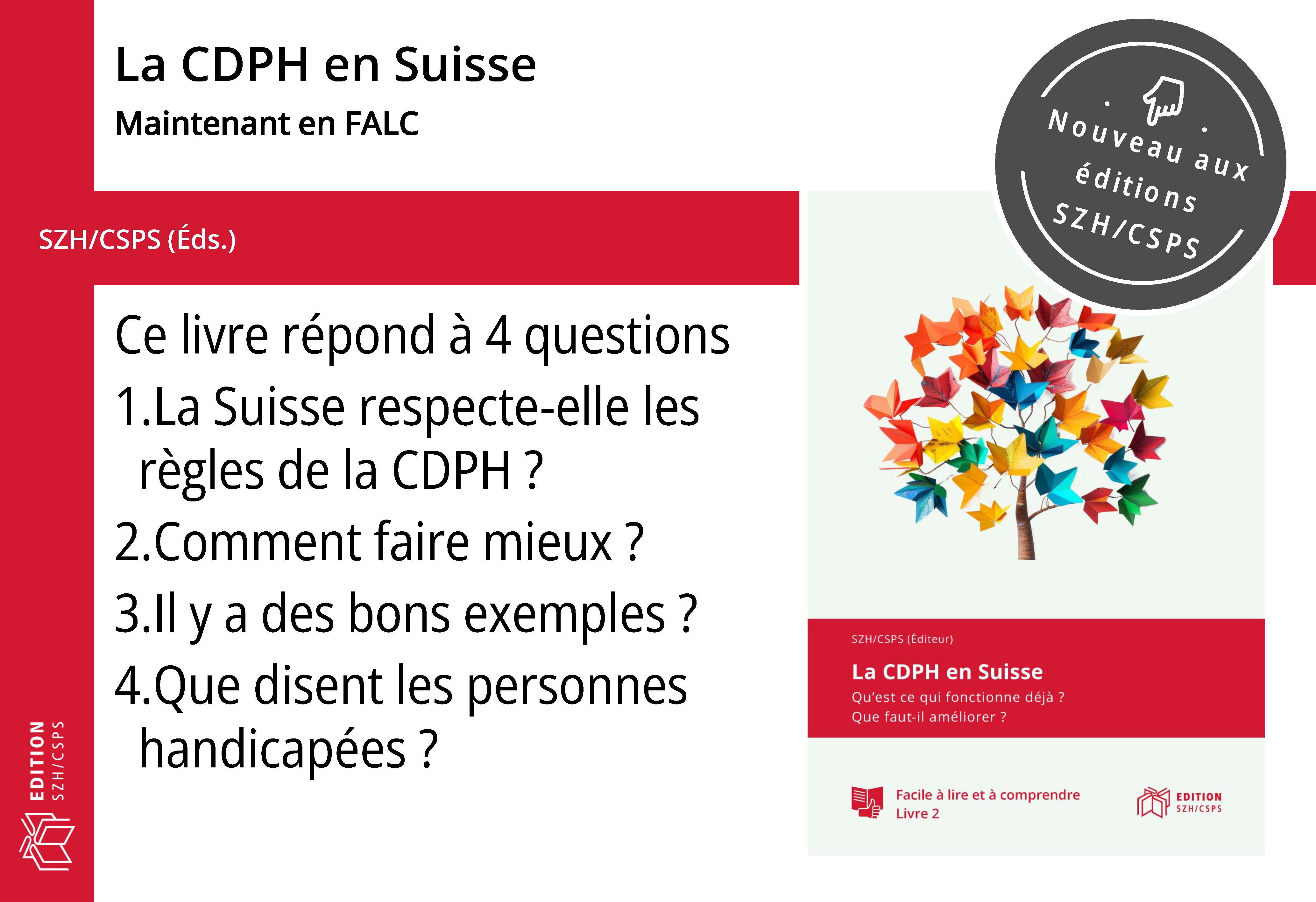De quoi parle-t-on quand on parle de maltraitance ?
DOI :
https://doi.org/10.57161/r2025-01-01Mots-clés :
handicap, déficience intellectuelle, maltraitance, préventionRésumé
Toutes les personnes ont le droit d’être protégées de la violence, en particulier les personnes dites vulnérables (Lewis et Campbell, 2017). Cet article vise à introduire le phénomène de la maltraitance à l’encontre des personnes en situation de handicap tel que perçu actuellement. La définition proposée par le Conseil de l’Europe sera rappelée. Un point de situation sera ensuite effectué concernant les connaissances disponibles en matière de prévalence. Finalement, l’intérêt des modèles écologiques permettant de comprendre les déterminants des abus sera abordé.
Références
Algood, C. L., Sung Hong, J., Gourdine, R. M., & Williams, A. B. (2011). Maltreatment of children with developmental disabilities: An ecological systems analysis. Children and Youth Services Review, 33(7), 1142–1148. https://doi.org/10.1016/j.childyouth.2011.02.003
Brown, H., & Groupe de travail sur la violence, la maltraitance et les abus à l’égard des personnes handicapées. (2003). Protection des adultes et des enfants handicapés contre les abus. Éditions du Conseil de l’Europe. https://rm.coe.int/16805a297d
Collins, J., & Murphy, G. H. (2022). Detection and prevention of abuse of adults with intellectual and other developmental disabilities in care services : A systematic review. Journal of applied research in intellectual disabilities: JARID, 35(2), 338–373. https://doi.org/10.1111/jar.12954
Conseil Fédéral. (2023). Violences subies par des personnes handicapées en Suisse. Rapport du Conseil fédéral donnant suite au postulat 20.3886 Roth Franziska du 19 juin 2020. https://www.parlament.ch/centers/eparl/curia/2020/20203886/Bericht%20BR%20F.pdf
Curtiss, S. L. & Kammes, R. (2020). Understanding the risk of sexual abuse for adults with intellectual and developmental disabilities from an ecological framework. Policy and Practice in Intellectual Disabilities, 17(1), 13-20. https://doi.org/10.1111/jppi.12318
Direction de la recherche, des études, de l’évaluation et des statistiques [DREES]. (2020). Les personnes handicapées sont plus souvent victimes de violences physiques, sexuelles et verbales. Études & Résultats, 1156. https://drees.solidarites-sante.gouv.fr/sites/default/files/2020-10/er1156.pdf
Elklit, A., Murphy, S., Skovgaard, C., & Lausten, M. (2023). Sexual Violence against Children with Disabilities: A Danish National Birth Cohort Prospective Study. Scandinavian Journal of Child and Adolescent Psychiatry and Psychology, 11(1), 143-149. https://doi.org/10.2478/sjcapp-2023-0015
Fang, Z., Cerna-Turoff, I., Zhang, C., Lu, M., Lachman, J. M., & Barlow, B. (2022). Global estimates of violence against children with disabilities: an updated systematic review and meta-analysis. The Lancet Child & Adolescent Health, 6(5), 313-323. https://doi.org/10.1016/s2352-4642(22)00033-5
García-Cuéllar, M. M., Pastor-Moreno, G., Ruiz-Pérez, I., & Henares-Montiel, J. (2023). The prevalence of intimate partner violence against women with disabilities: a systematic review of the literature. Disability and rehabilitation, 45(1), 1–8. https://doi.org/10.1080/09638288.2022.2025927
Hughes K., Bellis M. A., Jones L., Wood S., Bates G., Eckley L., McCoy, E., Mikton, C. Shakespeare, T., Officer A. (2012). Prevalence and risk of violence against adults with disabilities: A systematic review and meta-analysis of observational studies. The Lancet, 379(9826), 1621–1629. https://doi.org/10.1016/s0140-6736(11)61851-5
Krnjacki, L., Emerson, E., Llewellyn, G. and Kavanagh, A.M. (2016), Prevalence and risk of violence against people with and without disabilities: findings from an Australian population-based study. Australian and New Zealand Journal of Public Health, 40(1), 16-21. https://doi.org/10.1111/1753-6405.12498
Lewis, O., & Campbell, A. (2017). Violence and abuse against people with disabilities: A comparison of the approaches of the European Court of Human Rights and the United Nations Committee on the Rights of Persons with Disabilities. International journal of law and psychiatry, 53, 45–58. https://doi.org/10.1016/j.ijlp.2017.05.008
Lund, E. M., Corr, C. P., Kinavey, E., Mott, K. N., Chowdhury, D., Hammond, M., Thomas, K. B., & Schultz, J. C. (2021). Childhood disability-related abuse : A retrospective proof-of-concept study. Journal of Interpersonal Violence, 36(21-22), 10029-10053. https://doi.org/10.1177/0886260519879240
Lund, E. (2021). Disability-related abuse in people with intellectual and developmental disabilities: Considerations across the lifespan. International Review of Research in Developmental Disabilities, 61, 77-97. https://doi.org/10.1016/bs.irrdd.2021.07.006
Organisation mondiale de la santé [OMS]. (2001). Classification internationale du fonctionnement, du handicap et de la santé. https://iris.who.int/bitstream/handle/10665/83756/fa5418.pdf
Mailhot Amborski, A., Bussieres, E. L., Vaillancourt-Morel, M. P., & Joyal, C. C. (2022). Sexual violence against persons with disabilities: A meta-analysis. Trauma, Violence, & Abuse, 23(4), 1330-1343. https://doi.org/10.1177/1524838021995975
Petitpierre, G. (2002). Maltraitances et handicap. EDITION SZH/CSPS.
Roth, F. (2020, 19 juin). Violences subies par des personnes handicapées en Suisse (Postulat 20.3886). Conseil national. https://www.parlament.ch/fr/ratsbetrieb/suche-curia-vista/geschaeft?AffairId=20203886
Publiée
Comment citer
Numéro
Rubrique
Licence
© Geneviève Petitpierre 2025

Ce travail est disponible sous la licence Creative Commons Attribution 4.0 International .




